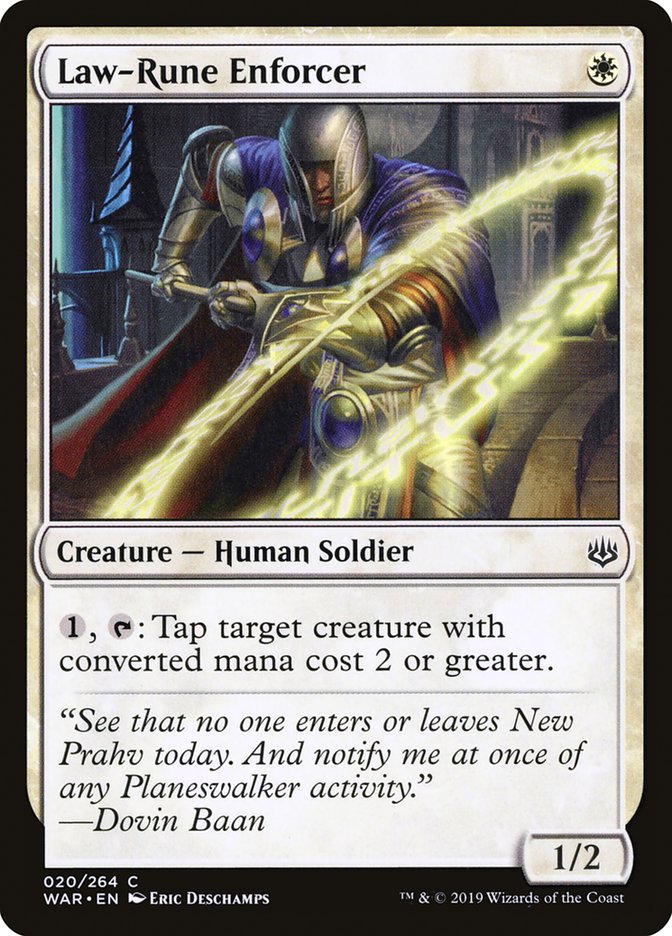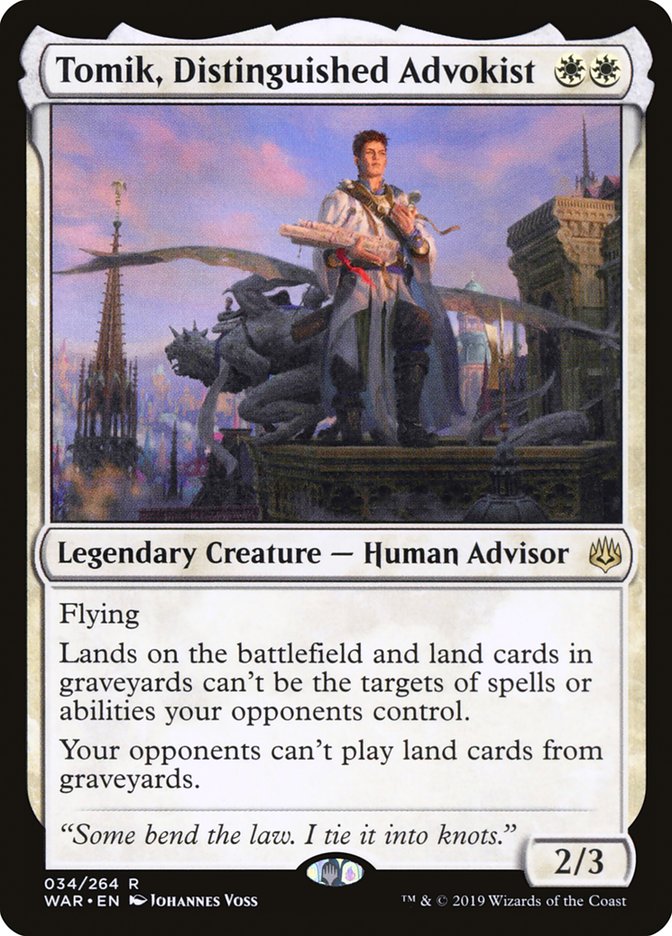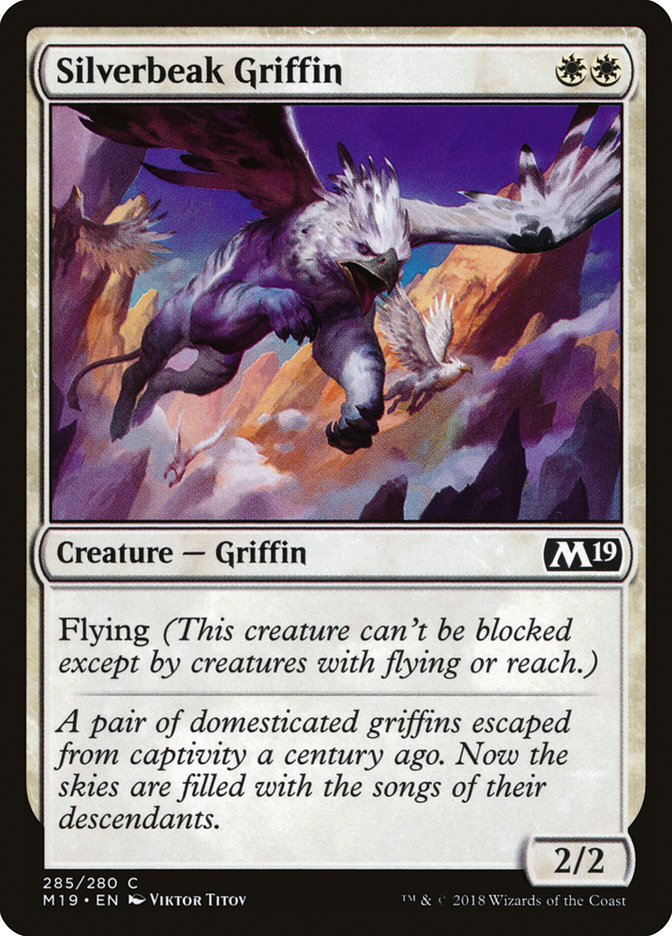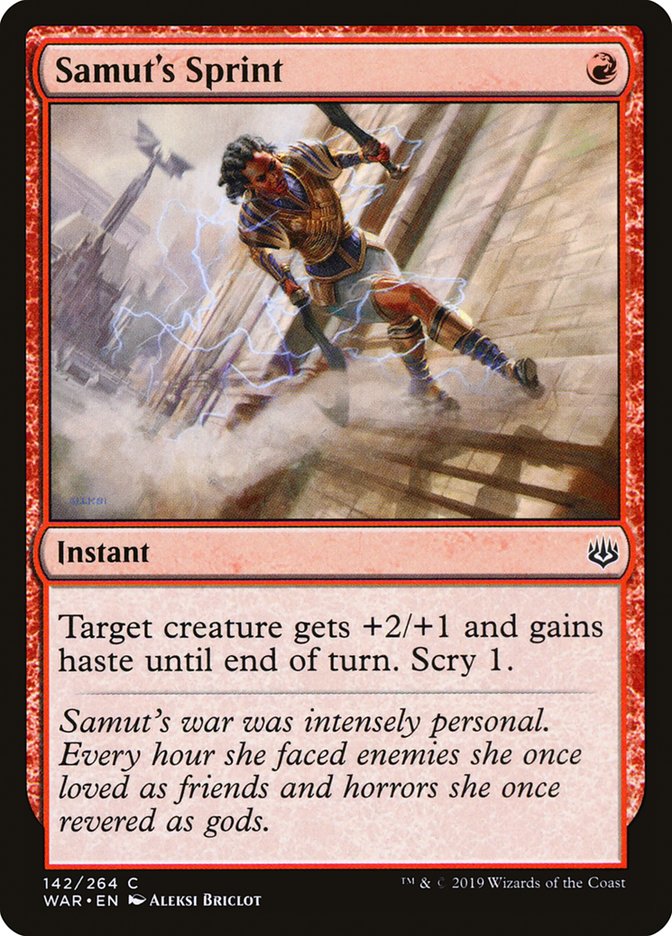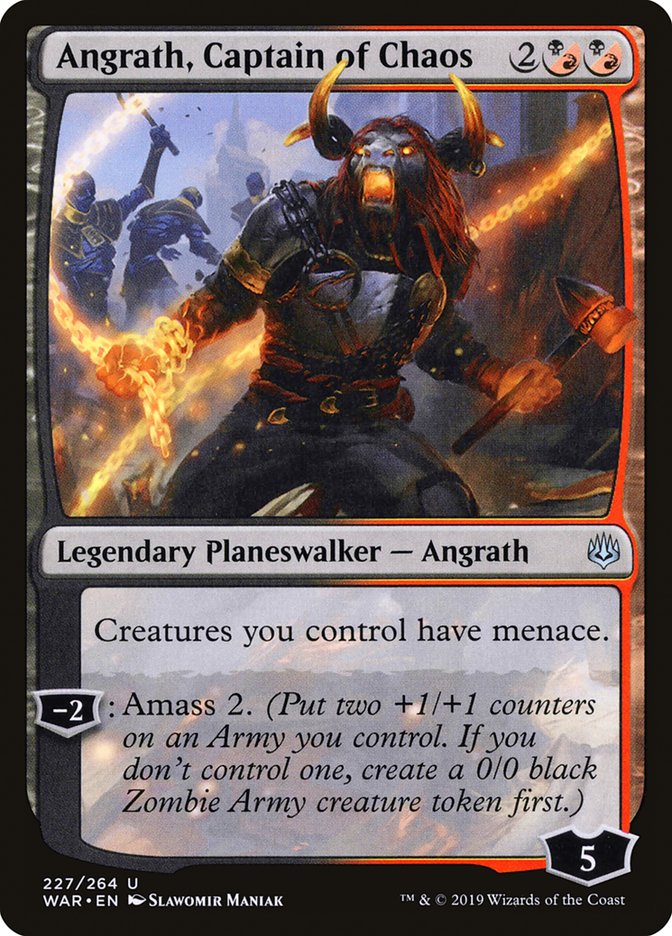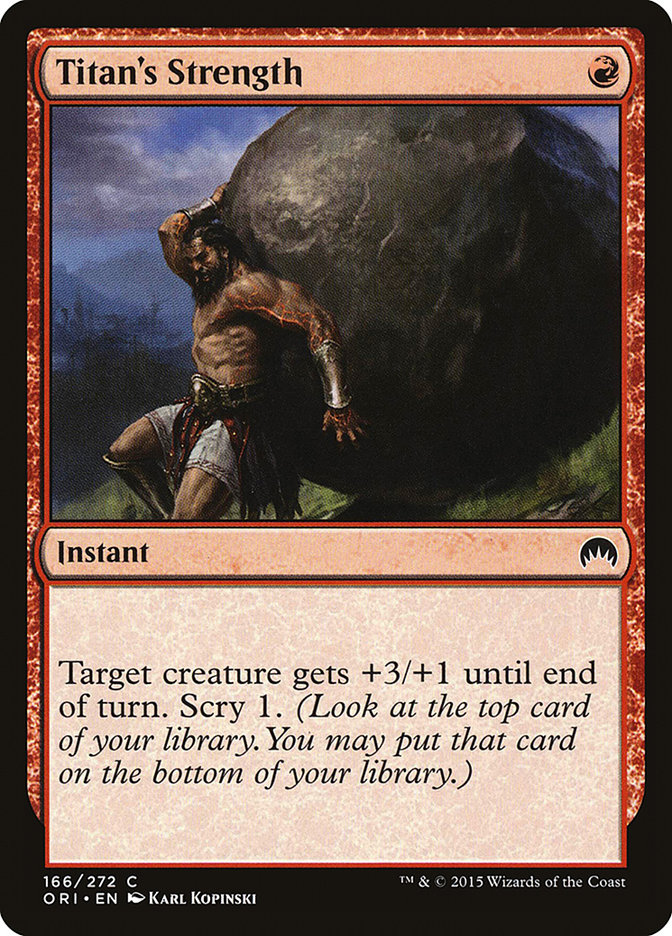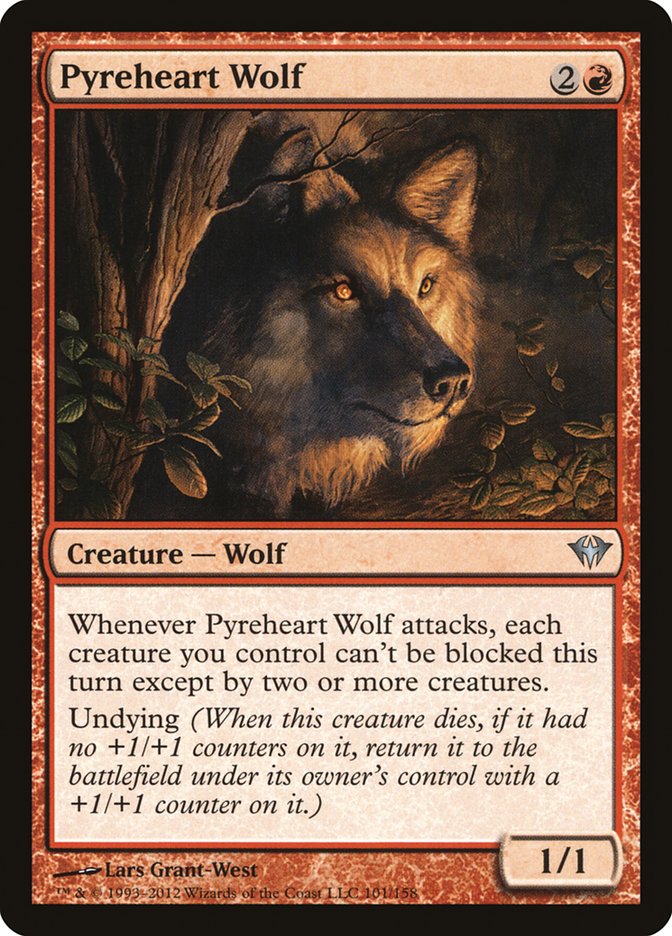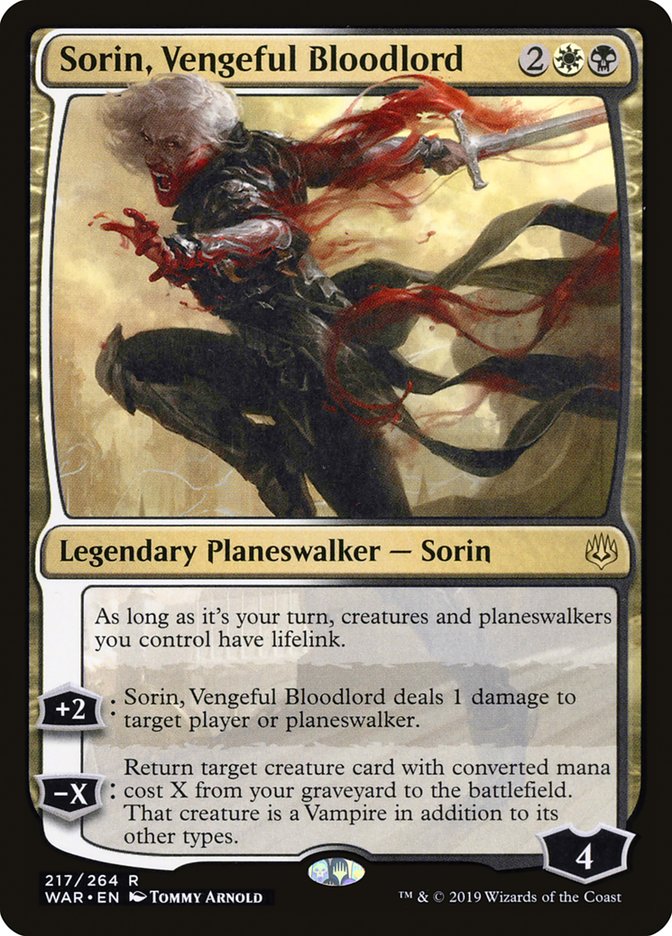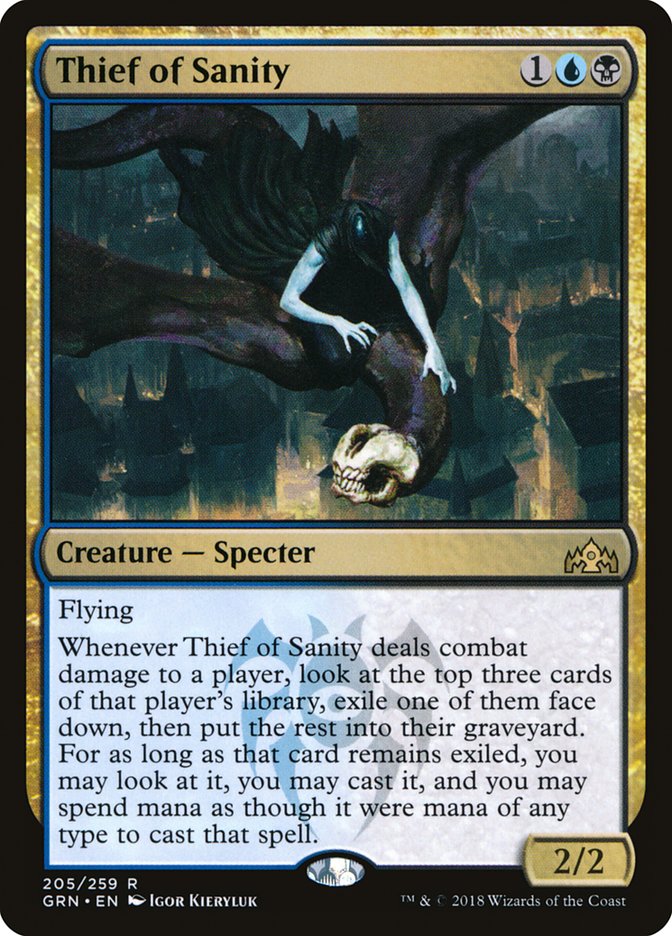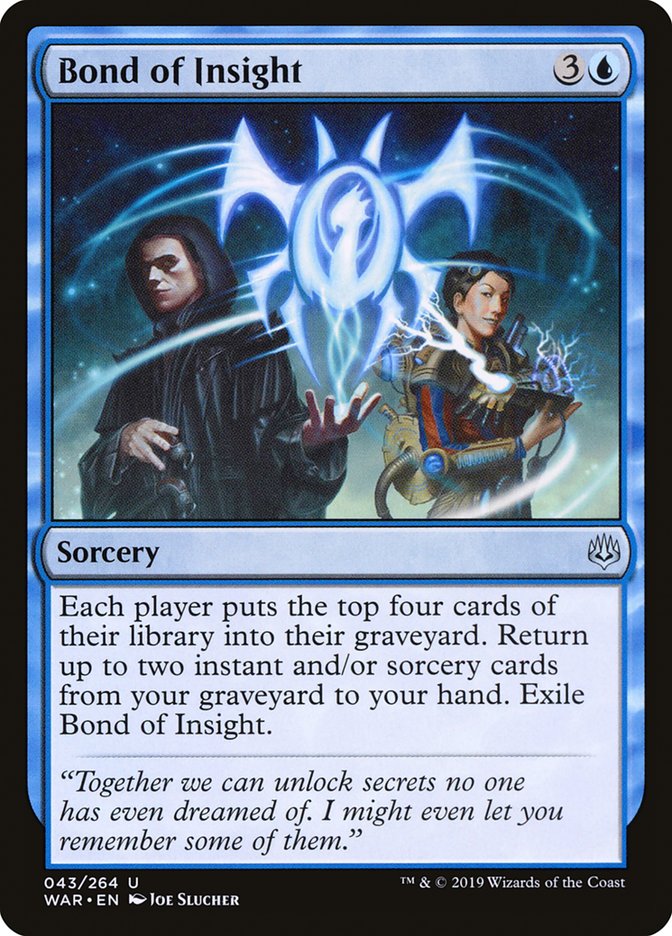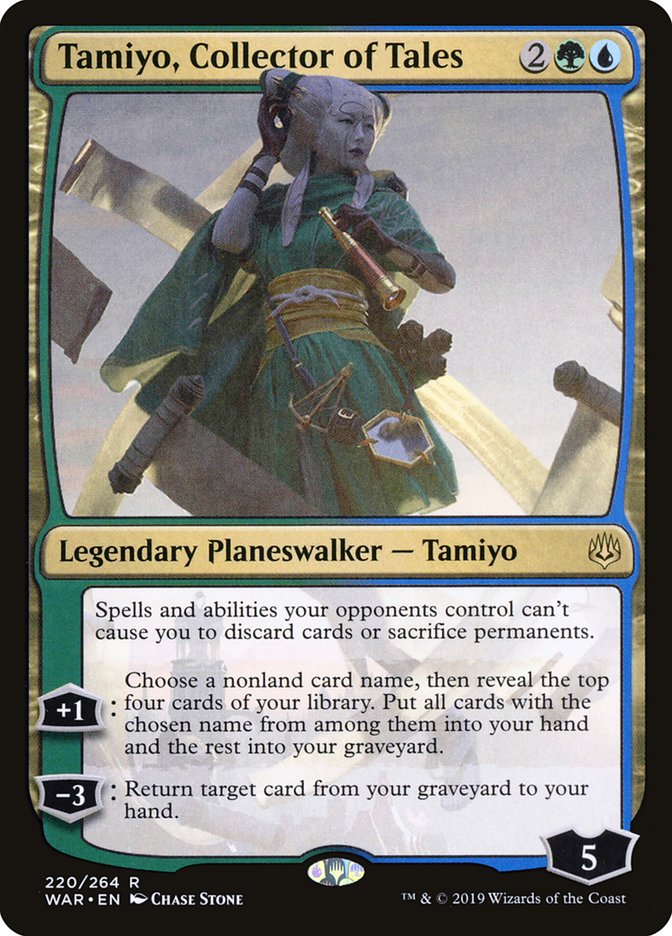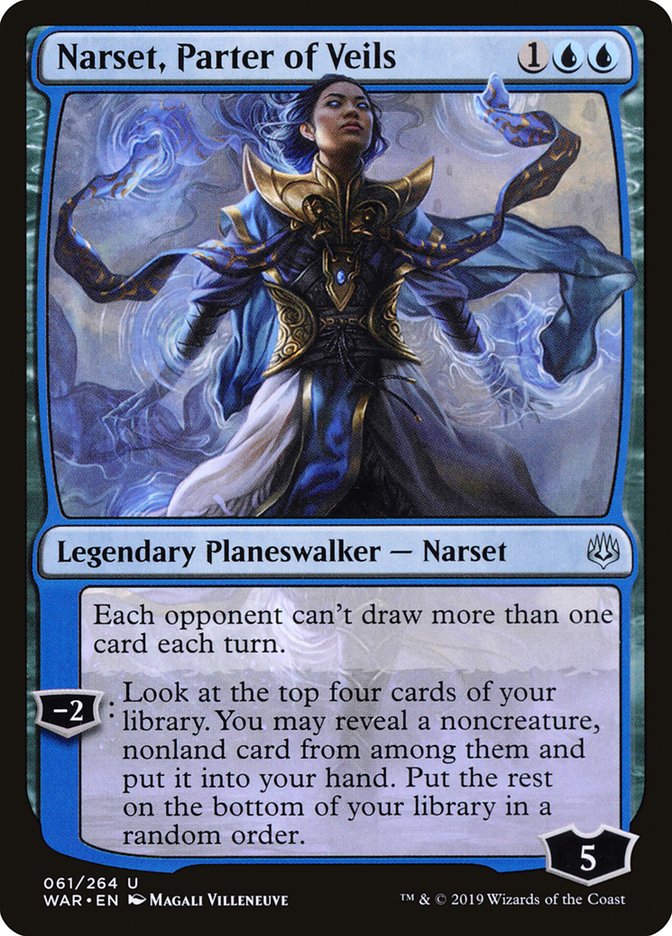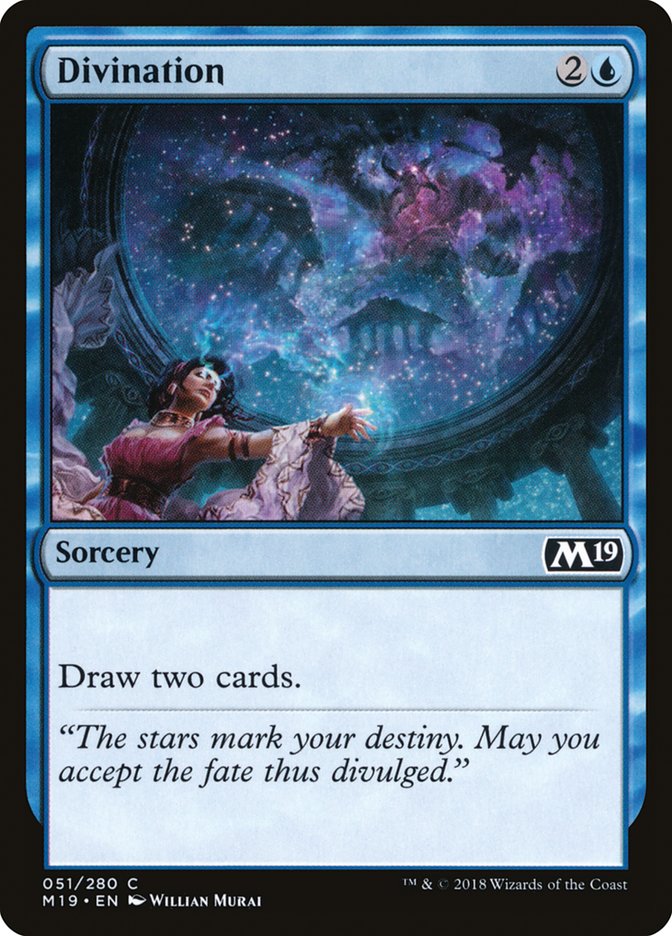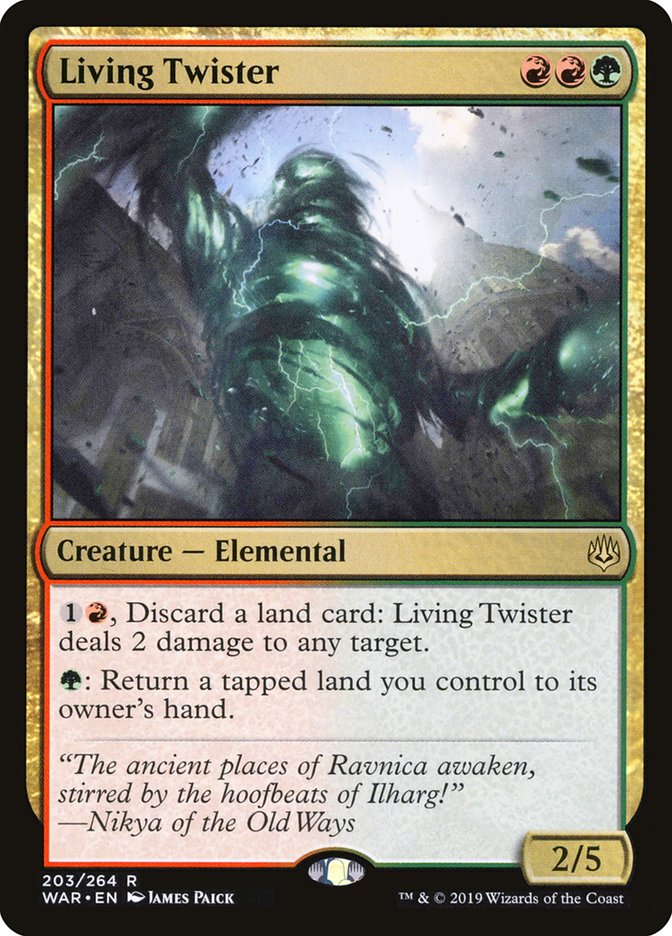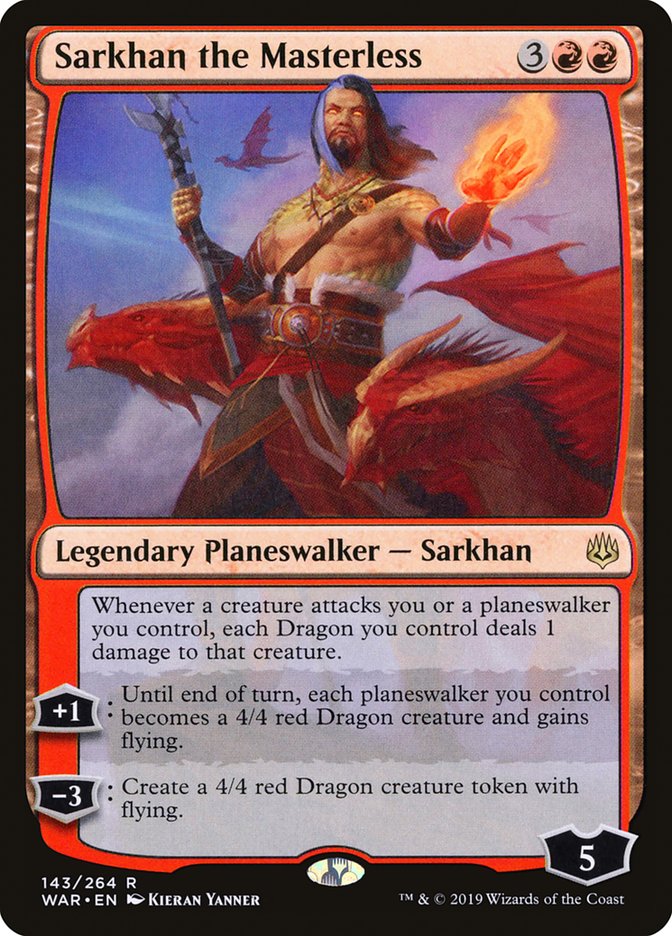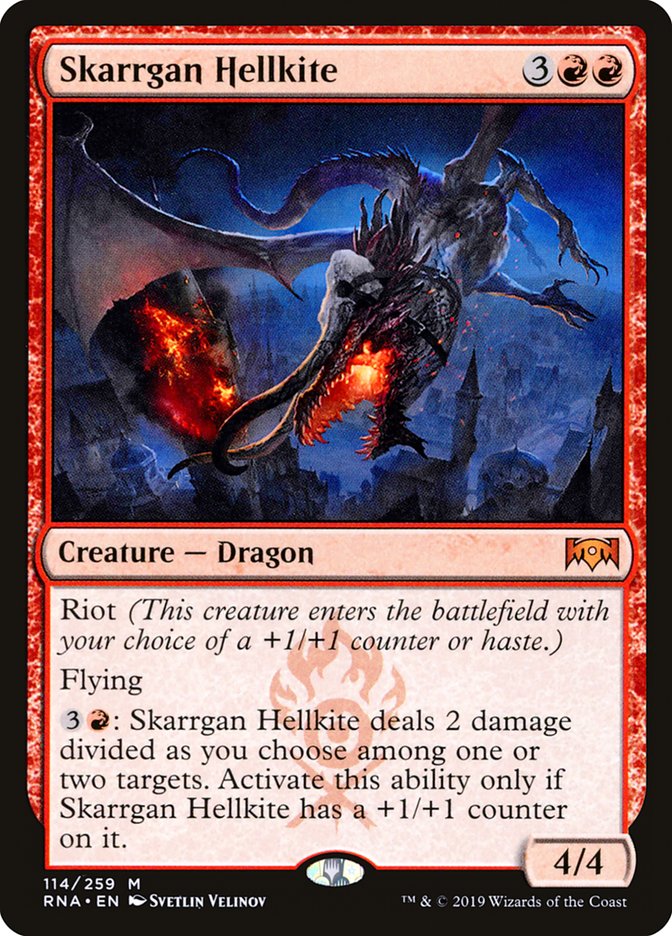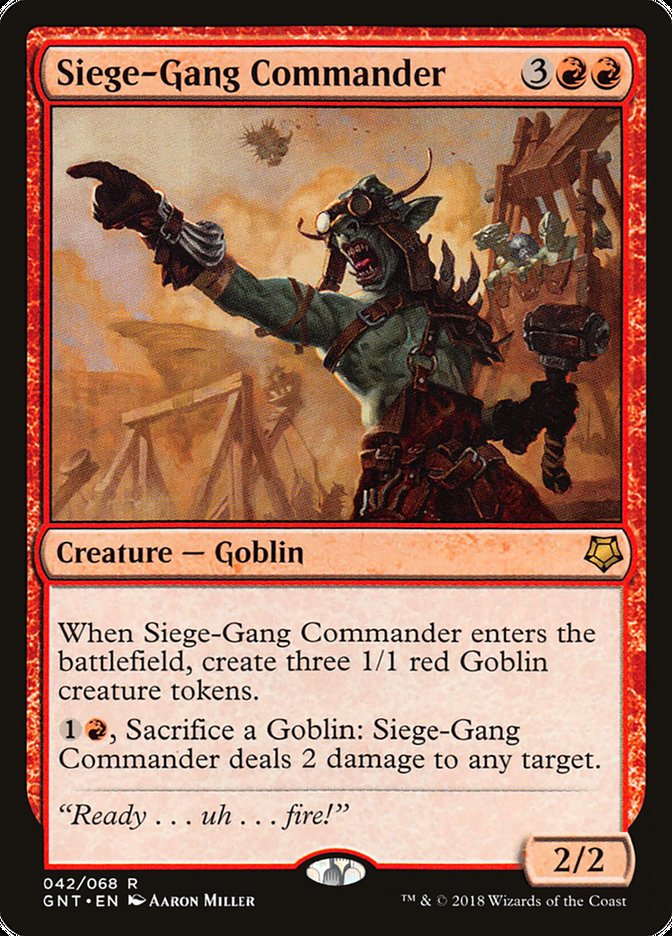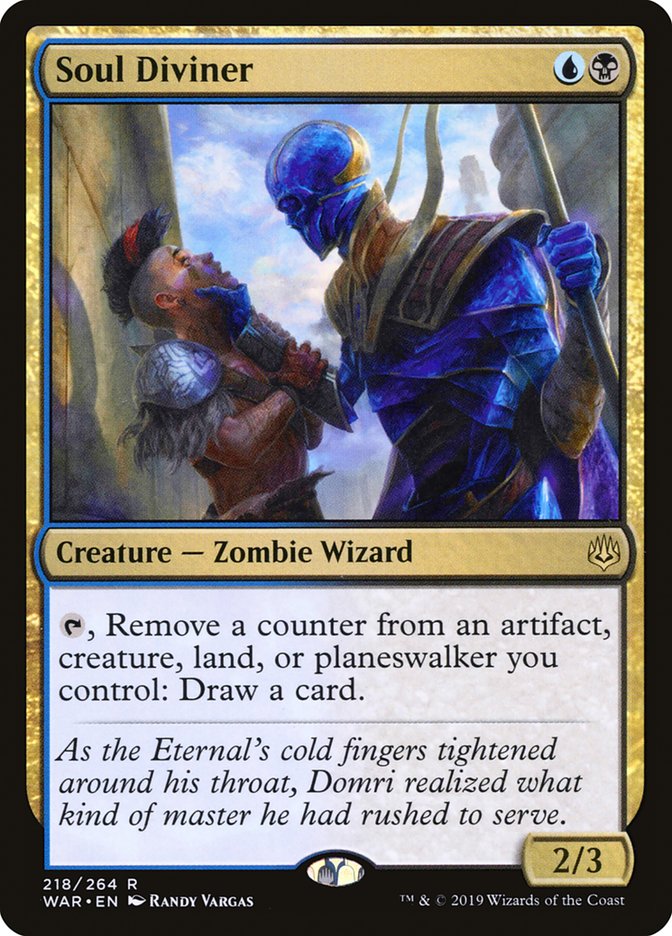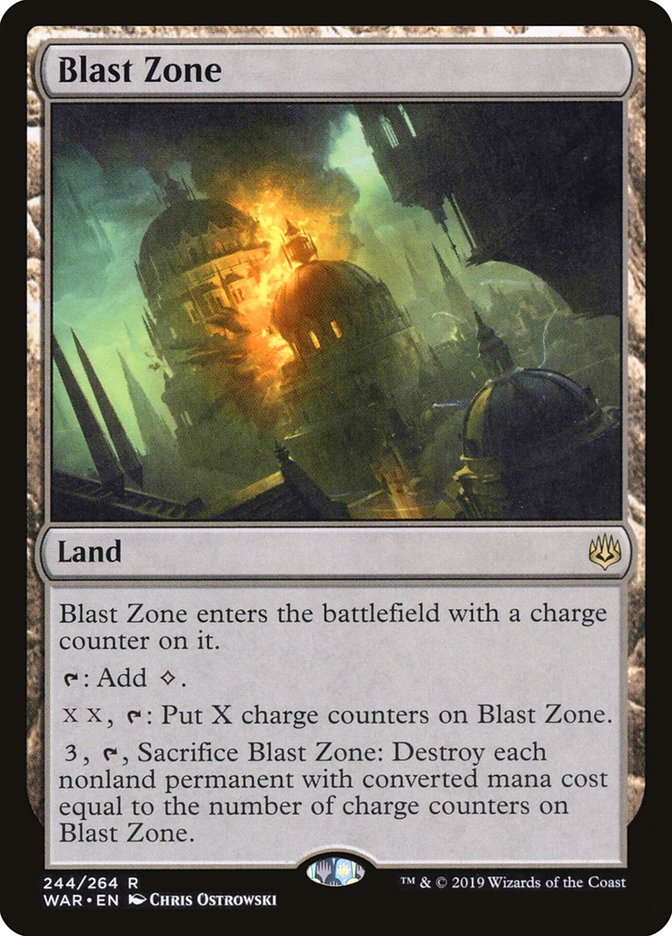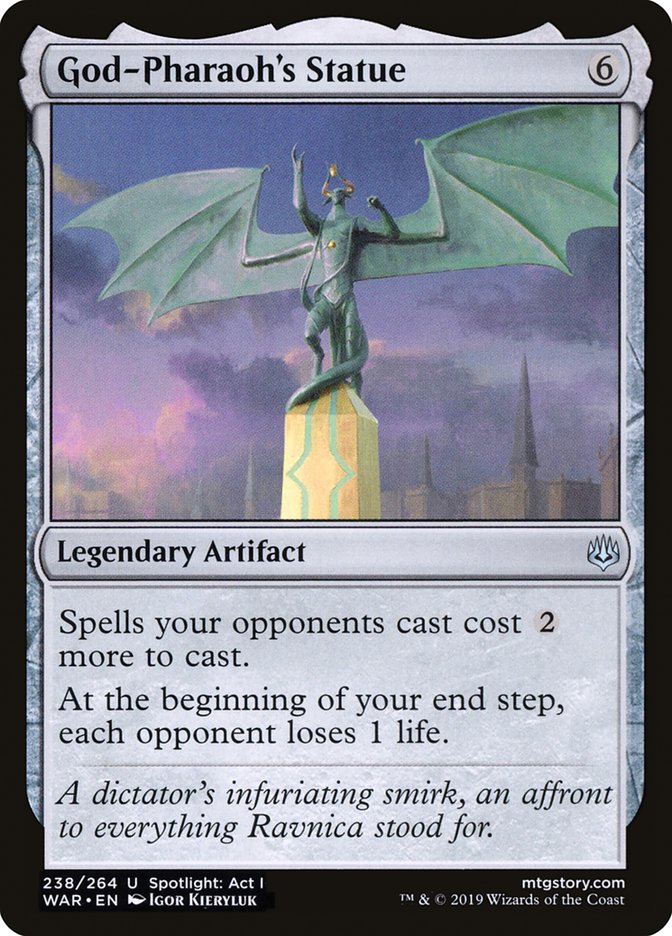Having spent the last month testing London Mulligan Modern, it feels weird to return to normal Magic. Standard, and even just Modern with the Vancouver Mulligan is a totally different game.
What I did test that has some bearing is War of the Spark Draft. It is yet another weird format, but weird in ways that make it oddly applicable to Standard. Planeswalkers and immediate battlefield card advantage are prevalent amongst a slew of high-rarity haymakers. Deep synergy decks are available. Even true control decks exist given the high power level.
Many cards from the set struck me as potential Standard standouts from just playing them in Draft. While there are the obvious mythic rares like Liliana, Dreadhorde General and God-Eternal Oketra everyone has discussed, a lot of these are deeper cuts in the lower rarities.
Here are a few of the easily overlooked cards from War of the Spark I believe will see Standard play, or easily could over the lifetime of the set.
Interplanar Beacon
A filter land for planeswalkers lets you staple some extreme mana costs together. Think Jace, Wielder of Mysteries plus Nicol Bolas, Dragon-God, or multiple early 1CC planeswalkers like Gideon Blackblade and… uh… Jace, Cunning Castaway.
The problem right now is that the checklands punish you for every land you play that doesn’t have a basic land type. For now, I would hold off on Interplanar Beacon, but watch Core Set 2020 and beyond for different fixing and more high-commitment planeswalkers.
Law-Rune Enforcer
Gideon’s Lawkeeper saw Standard play. Or maybe I just spent too much time around Craig Wescoe…
There are lots of problem creatures for Azorius Aggro. While you still have to actually remove Hostage Taker and Wildgrowth Walker from the battlefield, generic bodies like Rekindling Phoenix and Gruul Spellbreaker get pushed out of the way by this one-drop creature. I don’t know what more I could ask for.
Oh, a second toughness against Goblin Chainwhirler, which Law-Rune Enforcer has. Sadly, we can’t get the full-blown Knight status too, but we don’t get that many wishes when it comes to one-mana white creatures. Or the ability to Rishadan Port Llanowar Elves, but my Incubation Druid-casting opponents better watch out.
You can’t play a million one-power creatures, but four or five total between Hunted Witness and Law-Rune Enforcer is fine. You don’t really want multiple Enforcers in a game anyway, since mana payments are literally a cost.
Creatures (28)
- 3 Adanto Vanguard
- 4 Skymarcher Aspirant
- 4 Snubhorn Sentry
- 4 Benalish Marshal
- 4 Dauntless Bodyguard
- 4 Venerated Loxodon
- 2 Hunted Witness
- 3 Law-Rune Enforcer
Lands (8)
Spells (24)

Don’t play Tomik, Distinguished Advokist. You could already play Silverbeak Griffin. You didn’t. Do you care that much about the extra toughness for Cry of the Carnarium? Even if I did play Tomik, you could never convince me to play more than two copies. Drawing multiple two-drops is already bad when they aren’t legendary and I’m not in the market for my cards to be possibly doubly bad. I’m more in the market for casting every creature I draw as quickly as possible.
Samut’s Sprint and Angrath, Captain of Chaos
One of the things you learn watching years of Standard is the flavors of Mono-Red Aggro. There are three common categories: Burn or Sligh, where you lead on cheap attackers into burn to finish; Tempo, like a Tom Ross deck that is all one-drops and the hope you get far enough ahead on actions taken thanks to low costs and land count; and Creature Beatdown like Goblins that are white aggro decks in disguise.
A good red deck is rarely 100% one category, but finding a better red deck is a lot about understanding when to shift categories to exploit a metagame. This is best exemplified in the Pro Tour Dragons of Tarkir- and Pro Tour Magic Origins-winning lists changing from Goblin tokens beatdown to a burn-heavy one-drop aggro list due to the one-set metagame shift.
Ravnica Allegiance Standard Mono-Red Aggro is solidly in the Burn category. It is soft to light spot removal on the creatures it counts on for recursive damage or ways to exchange directly for burn spells. A card like Absorb is crippling against it.
Samut’s Sprint and Angrath, Captain of Chaos represent important tools for the other sub-archetypes. Samut’s Sprint is a card for Tempo Red, which exploits more expensive removal with an overload of cheap spells but gets in bad spots against cheaper interaction. Absorb is going to be trash against that deck. If you utilize the haste on a creature with at least one power, Samut’s Sprint produces at least as much damage as Titan’s Strength, a staple of the previous archetype.
Menace on Angrath, Captain of Chaos is huge for Creature Beatdown, which exploits opponents coming up an answer or two short but has issues with spells or blockers that cover multiple threats. Pyreheart Wolf remains an all-time favorite of mine for a similar use in the Return to Ravnica era.
After a quick pass, I don’t think either deck is quite there in War of the Spark Standard. Too much of red’s power is tied up in Goblin Chainwhirler and Rekindling Phoenix as solo threats, not in the low drops and amplifying effects that enable these go-wide decks. The attempted exercise did unearth some nice interactions, like Krenko, Tin Street Hooligan with Goblin Motivator haste or Angrath, Captain of Chaos menace. Keep an eye on that legend as well.
Maybe we can make Angrath, Captain of Chaos work with black aggro, though?
Creatures (28)
- 4 Diregraf Ghoul
- 4 Vicious Conquistador
- 2 Grasping Scoundrel
- 3 Graveyard Marshal
- 3 Midnight Reaper
- 1 Plaguecrafter
- 4 Spawn of Mayhem
- 4 Gutterbones
- 3 Lazotep Reaver
Planeswalkers (2)
Lands (22)
Spells (8)

Lazotep Reaper isn’t the most exciting card, but already controlling a Zombie Army gives the Angrath token virtual haste, which is a nice touch. Two bodies also make it much easier to spectacle a Turn 3 Spawn of Mayhem, which is definitely a good rate.
I also feel like this deck could benefit from a light splash, likely Despark and Sorin, Vengeful Bloodlord from white. Unlike the white aggro decks, you already have anti-spell tools in discard and don’t need Disdainful Stroke, and Despark is an efficient catchall answer for things black often struggles with.
If you were splashing blue, it would be for midrange breakers like Thief of Sanity and Hostage Taker, but fragile clunkier creatures seem bad when your opponent is overloading on removal against your main aggro plan. I would rather have my big card swings tied to noncreature permanents like Davriel, Rogue Shadowmage.
Bond of Insight
Bonds of Insight was a major overperformer in control decks that started to approximate Constructed gameplans. It is easy to forget how much better double spell-Regrowth is than drawing two. It is also easy to forget how much better double spell-Regrowth is than double Raise Dead because your spells all immediately go to the graveyard when cast and never get exiled with Vraska’s Contempt.
The mill four also lets you loosey-goosey it with only one target in the graveyard and assume you will get full value. Mill four is further tied to Search for Azcanta, and as was pointed out on The GAM Podcast, recurring two Root Snares is no fun for anyone. Chemister’s Insight is tough competition, but a fifth or sixth card draw spell isn’t out of the question for Nexus of Fate decks. Maybe you even want to max out on this effect to increase the odds the mill four hits a second Bonds to recur.
The thing competing the most with Bonds of Insight might be Bryan Gottlieb’s current Twitter craze. Tamiyo, Collector of Tales plays both the self-mill dig and recursion roles and is a long-term engine when you start looping turns.
Narset, Parter of Veils
Narset, Parter of Veils was another overperformer in these pseudo-Constructed decks. Again, it’s easy to underestimate the abilities of this card. Narset isn’t tied to instants and sorceries like Augur of Bolas. You are much less likely to -2 only to look at the bottom four cards of your library. She also finds other planeswalkers and Search for Azcanta, so actual closers and not just removal.
There’s also the same instinct to compare Narset to Divination, but that’s also not quite right. Again, there’s a huge difference between “draw two cards” and “take your best two spells from your top eight.” That’s Divination versus Dig Through Time.
Narset’s static ability is also backbreaking against Hydroid Krasis and control decks, things Esper Control really wants help with. Technically you can also loop Narset with Blink of an Eye, but that sounds too cute even for Nexus of Fate decks.
I would cleanly slot Narset, Parter of Veils into Esper Control, likely with the second copy in the sideboard. The deck is already aimed at supporting double blue for Absorb, so the mana cost on Narset is no big deal. It’s not even like you need to cast her on Turn 3. You are reloading on action with her and not trying to hit lands on curve like a traditional card draw spell. Turn 5 or Turn 6 with an answer up is a perfect spot to cast Narset.
Living Twister
Living Twister has weird text and numbers obscuring a really good rate.
It costs three mana, below the threshold where you need your creatures to measure up to the locked-in value of Hostage Taker and Rekindling Phoenix. Double red cost lines up with Goblin Chainwhirler triple red, so no big deal. The good activation is red mana, so it isn’t a total blowout to get this taken hostage. It has five toughness, blocking all the other low-cost creatures and surviving Lava Coil. It only costs two or three mana to convert excess lands to Shock action, which is a huge deal in a Standard format with few value lands and checkland manabases that punish playing anything but your fixing lands. It is bonus removal to make clearing Rekindling Phoenix with Collision easy, and it lets you cover the games Azorius Aggro goes super-wide around a blocker or two. Only two power isn’t the best raw beats, but anything that looks remotely like Arc-Slogger will get me hyped up.
I don’t want to play a ton of Living Twister, but one or two filling out the three-drops in Gruul Aggro just makes a ton of sense.
Sarkhan the Masterless
There are lots of good red five-drops these days. Sarkhan the Masterless will be the next viable option on that list.
I’ll be honest here: part of this was due to a mistake. You see, the first time I saw Sarkhan resolve, we ticked it down to one loyalty, made a Dragon token, and easily won the game. My second opponent with it ticked it down to two to make a Dragon, and I had a “what the heck” moment.
Who gave this five starting loyalty? The baseline is five mana for two 4/4 fliers, and your opponent can’t just soak up a hit or two without Sarkhan threatening to extract another card out of them for the second Dragon token.
I think Sarkhan hits a spot between Siege-Gang Commander and Skarrgan Hellkite in terms of function. It clearly matches them on rate, so which to play is a metagame- and decklist-dependent question.
Honestly, the damage ability on Skarrgan Hellkite has fairly low utility in Standard. It’s good against white aggro, but my experience was that the game was mostly over anyway if the red deck is making their 4/4 flier unopposed against Azorius Aggro. Sarkhan’s static ability is similarly relevant but not really relevant. Is a second 4/4 flier better than haste? Skarrgan Hellkite is better against planeswalkers, but Sarkhan the Masterless is way better against removal.
The question then becomes if you want your removal-resilient five-drop to be Siege-Gang Commander instead. Both cards clock in a similar timeframe, goldfishing twenty damage over three turns and just a bit short of twenty over two turns.
I think this comparison comes down to the other cards in your deck. Sarkhan is better against sweepers and medium opposing creatures that hold off tokens but lose to 4/4s. Siege-Gang Commander is better against spot removal and is a bit better against larger threats that can bash down Sarkhan and leave just a 4/4, where the Goblin mob is a bit more threatening on the swing back.
The current Mono-Red Aggro decks are more Burn decks, as I mentioned, so I think Siege-Gang Commander makes the most sense, if you even want a five-drop over Experimental Frenzy. Your opponents won’t have tons of sweepers to punish the wide token finisher. But oddly Sarkhan the Masterless might be better in Goblins because it is a different angle of attack from the other cards.
I will note that when Sarkhan the Masterless becomes a Dragon, he isn’t indestructible and damage dealt to him isn’t prevented. This is unlike all prior versions of this effect. They can block with a Rekindling Phoenix or Mortify Sarkhan.
I was also not considering the fact that Sarkhan makes your other planeswalkers into Dragons. Double planeswalker is usually good enough to ignore the bonus, but War of the Spark brought quite a few playable planeswalkers that don’t quite run away with games as we are used to.
Maybe something like this works with Saheeli, Sublime Artificer leading the way for several cards I discussed today. Multiple Sarkhans being useable to more 4/4 Dragons certainly helps convince me to play a bunch of them.
Planeswalkers (11)
- 4 Saheeli, Sublime Artificer
- 2 Nicol Bolas, Dragon-God
- 2 Narset, Parter of Veils
- 3 Sarkhan the Masterless
Lands (26)
Spells (23)
- 4 Opt
- 2 Syncopate
- 2 Negate
- 1 Vraska's Contempt
- 1 Fiery Cannonade
- 1 Cast Down
- 1 Shivan Fire
- 4 Thought Erasure
- 2 Chemister's Insight
- 2 Lava Coil
- 2 Ritual of Soot
- 1 Tyrant's Scorn
Sideboard

While it didn’t make the cut here, an idea I tripped into building this deck is using Soul Diviner with Blast Zone as an engine, or even a way to clear up tokens.
Other possible directions include splicing in Mox Amber and Sai, Master Thopterist or the Ral, Storm Conduit plus Explosion combo.
God-Pharaoh’s Statue
This was the pet card of Alex Majlaton, and I was shocked at how effective it was. The double tax is at least Rain of Salt (double Stone Rain), a baseline rate of two of their lands for your spell, but this comes online just in time to doubly impact double-spell turns and lock up even more lands.
And if you ever ramped it out a turn early or they missed a land drop, the game ended.
I’m unsure how much of the auto-win if ramped out doesn’t also apply to Carnage Tyrant or Ugin, the Ineffable, but I think God-Pharaoh’s Statue is slightly higher-impact in non-interactive matchups. Maybe the answer is that we now have a surplus of high-power ramp payoffs and it’s worth just jamming.
Creatures (19)
Planeswalkers (3)
Lands (8)
Spells (30)

Remember: friends don’t let friends play Simic Guildgate.
War of the Spark is looking just as deep and flexible card-by-card as the last two Ravnica sets, which means there are even more ways to tie things together outside of the Ravnica guild lines. It’s going to take a while to unpack what it has to offer, so don’t forget to take a second look at even the less flashy lower-rarity cards as possible standouts.


